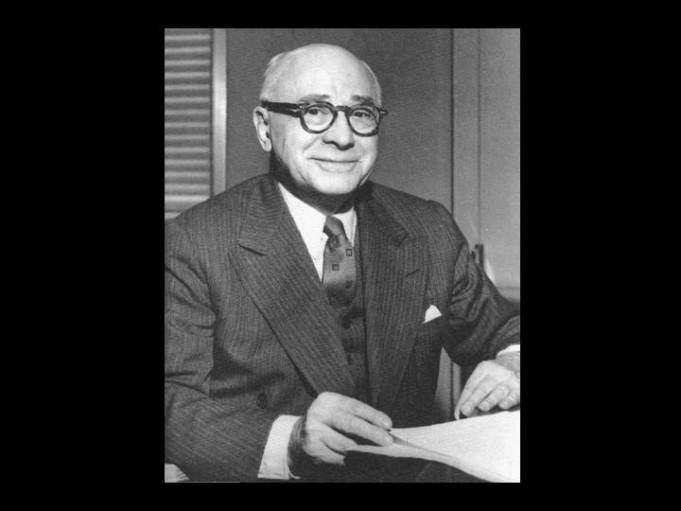In today’s profile we have Harry Benjamin, a German-born, American Endocrinologist and Sexologist. Many of us in the community are familiar with his name as it is associated with the standards of care we often have to adhere to. But do we really know anything about him? Today we explore his story and the effect he had on all we know that is transgender.
“For the simple man in the street, there are only two sexes. A person is either male or female, Adam or Eve. With more learning comes more doubt. The more sophisticated realize that every Adam contains elements of Eve and every Eve harbors traces of Adam, physically as well as psychologically.” – Harry Benjamin
Harry Benjamin was born on January 12, 1885. He received his doctorate in medicine in 1912 for his work with tuberculosis. In 1913 he came to the United States to work with a doctor who had incorrectly thought he found the cure for tuberculosis. While traveling back to Germany in 1914, the first World War had erupted and he was faced with the choice of going to an internment camp in England or returning to the United States. In 1915 Benjamin started his own medical practice where he would work both in New York and San Francisco.
It was not until 1948 in San Francisco when Benjamin was asked by Alfred Kinsey, a fellow sexologist, to see a child who “wanted to become a girl” despite being born male. Up to this point both Kinsey and Benjamin had never encountered such a condition. This led to them both understanding this was more than just transvestism which was the only classification at the time.
Against the opinions of his peers Benjamin decided to treat this patient with hormone therapy and this was the first case of such treatment. He found the results had helped the patient to relieve some of the issues associated with the condition. He then referred the patient to doctors who could perform gender reassignment surgery. Regretfully Benjamin lost touch with the patient after that time. He went on to treat several hundred people with this condition, often without accepting payment.
 Benjamin was known to be a kind, respectful and caring person. He wrote many letters to many doctors and organizations to properly refer patients so they could get the care they needed. This was at a time where it was illegal to even wear the clothes of the opposite gender in most places. In 1966 he wrote a book titled The Transsexual Phenomenon. This established a baseline for treatment and resulted in the terms transgender and transexual. In the book Benjamin profiled his work with Christine Jorgensen who was one of the pioneers of the transgender story. Being the first noted American to come out as transgender, her story put the transgender cause in the limelight for the first time.
Benjamin was known to be a kind, respectful and caring person. He wrote many letters to many doctors and organizations to properly refer patients so they could get the care they needed. This was at a time where it was illegal to even wear the clothes of the opposite gender in most places. In 1966 he wrote a book titled The Transsexual Phenomenon. This established a baseline for treatment and resulted in the terms transgender and transexual. In the book Benjamin profiled his work with Christine Jorgensen who was one of the pioneers of the transgender story. Being the first noted American to come out as transgender, her story put the transgender cause in the limelight for the first time.
“The forces of nature, however, know nothing of this taboo, and facts remain facts. Intersexes exist, in body as well as in mind. I have seen too many transsexual patients to let their picture and their suffering be obscured by uninformed albeit honest opposition. Furthermore, I felt that after fifty years in the practice of medicine, and in the evening of life, I need not be too concerned with a disapproval that touches much more on morals than on science.”
Harry Benjamin died on August 24, 1986 at the age of 101. In 1979, with his permission, the Harry Benjamin International Gender Dysphoria Association was formed. This organization is now known as The World Professional Association for Transgender Health (WPATH). They are a group of Medical Professionals that established the standards of care for transgender treatment that are followed today. The first version was published in 1979. Today they are up to the seventh version which was established in 2011.
There is much debate regarding the standards of care. What is important to know is that the standards put forth by the WPATH organization were based on Benjamin’s work, but he did not establish them directly. There are some people in the transgender community that look at the standards of care as a form of gatekeeping that prevents them from getting the treatment they need. Others see it as essential to providing the proper care. What we do know is the guidelines were put in place as a guide and they are not legal or binding. They were designed to be flexible and give the medical community a reference point.
The debate on the standards of care has sometimes caused Harry Benjamin to be seen in a negative light. The truth is the he was the first person to devote his life to helping the transgender community. Much of his work is still the basis for most of the treatments that are performed today. He was able to advance the medical understanding of what transgender is more than any person in human history and many of us would not have received the care we get today without his efforts.
































